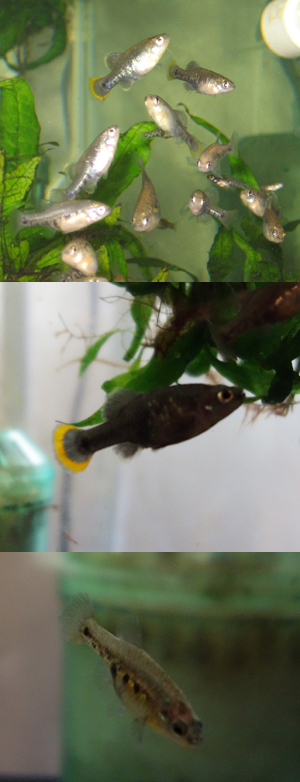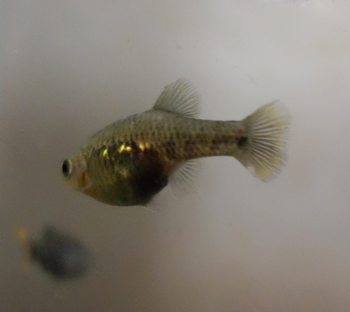This goodeid has
been considered extinct in the
wild for over 35 years, but there
have been recent reports of isolated populations that may
still be in existence.
There have been a number of attempts to reintroduce this
fish back to the wild
without success, and it is only currently being kept today
by a few hobbyists.
This is the rarest fish I offer on this website. In
fact, this was the
American Livebearer
Association species maintenance program focus species
in 2008, chosen because its numbers have been declining in
the hobby, and was
being kept by relatively few. I came across
this line over 10 years ago, and it has
proven to be fairly hardy, and reproduces well. The males
when in breeding color
will become charcoal black, (as can be seen in the
video)
with a bright orange
stripe in the tail. A very attractive fish. If you would
like a species whose ultimate
survival depends on people like yourself keeping
it, this is the fish you are
looking for.
This is not a difficult fish to keep, and most who have kept
this line have had
success with it. Females reproduce best
when moved into a separate planted
tank to
have their young, as they can be fry eaters.
A well filtered tank
with
regular water changes is
essential, and occasional live
or frozen food
will guarantee regular drops of 10-15 young
about every 2 months.
Once the young are large enough to fend for
themselves (3 weeks+) they can
be released in with the
adults.
When I first began keeping
rare fish, this was an important fish for many
hobbyists in that it was very difficult to find, and success
at keeping it could
be tricky. Improved care and concern for its rare
status has increased its
numbers, though it is still rarely
seen when compared with other goodeid
species being kept. Which is a shame, as it is a pretty and
interesting
little fish. More
Information here.
Back to Previous Species
|
 |


